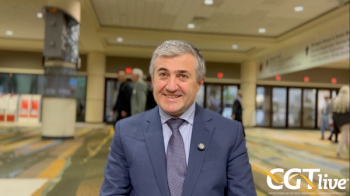
Noninflammatory Neurotoxicity Events in Patients Receiving CAR-T
Caroline Diorio, MD, FRCPC, FAAP, an attending physician at the Cancer Center at Children's Hospital of Philadelphia, discussed a study she coauthored that was recently published in Blood.
Caroline Diorio, MD, FRCPC, FAAP, an attending physician at the Cancer Center at Children's Hospital of Philadelphia, and her colleagues recently published a study in Blood entitled “Quadriparesis and paraparesis following chimeric antigen receptor T-cell therapy in children and adolescents”. The study looked at a small group of children who experienced quadriparesis or paraparesis immune effector cell-associated neurotoxicity syndrome (ICANS) phenomena following treatment with CAR-T and notably found that the ICANS was not associated with inflammation, in contrast to expectations.
Following the study's publication, CGTLive® reached out to Diorio to learn more. Diorio spoke about the key findings of the research and emphasized the need to better understand the toxicities associated with chimeric antigen receptor T-cell (CAR-T) therapy.
CGTLive: Can you give some background context for your study recently published in Blood?
Caroline Diorio, MD, FRCPC, FAAP: We know that one of the major toxicities that we see following CAR T-cell therapy in pediatric patients is ICANS. As we've become more aware of this syndrome, and as we've treated more patients, we've started to understand that there are lots of different phenotypes where this occurs. As we were going through a sort of larger look at neurotoxicity syndromes in our patients, we identified this small cohort of patients that had developed paraparesis or quadriparesis following CAR-T, which is not something that had been reported previously, and to us was very interesting because it represented a really unique phenotype relative to the other type of neurotoxicity we've seen. We hypothesized that this was likely because of an inflammatory reaction as has been generally speculated for the other neurotoxicity syndromes. So we were really surprised that we actually saw no evidence of excessive inflammation in the studies that were done on these patients, and then on further correlative analyses that we did from their cerebrospinal fluid (CSF) in their blood.
Can you give an overview of the main findings from the study?
One of the key findings is, as I mentioned, that there is this small group of patients that developed paraparesis or quadriparesis following CAR-T, which is a rare manifestation of neurotoxicity. Then the really surprising part for us was that this did not appear to be associated with any signs of inflammation in either the brains or the spinal cord or in the CSF when we have those samples available in patients.
How would you summarize the key implications of these findings for doctors and the broader healthcare community?
Although this is a very small number of patients, I think that these cases are really illustrative about how we structure our thinking around neurotoxicity syndromes following CAR-T. I think we need to treat each phenotype of neurotoxicity syndrome after CAR-T uniquely because they have very different clinical presentations, and that means they may have different pathophysiology. So I think we need to start thinking about neurotoxicity in terms of more specific phenomena, instead of sort of this basket of terminology.
Were there any limitations in this study or areas you’ve identified for further research?
There's always limitations! It's a very small number of patients, this is a very rare finding. I do a lot of research with immunology collaborators, and one thing that I've learned from them is that we can really learn a lot from the sort of edge cases. The most extreme presentations can teach us a lot. That being said, we certainly can't make generalizations more broadly based on this very small number of patients, and that's really not our intent. Our intent is to start to understand the pathophysiology of these conditions so we can develop better treatments.
Is there anything else you would like to share with our audience, either about this research, or just in general?
CAR T-cells have been remarkable in their ability to effect cures for patients who otherwise had no other options available. In some ways, they can be safer than traditional chemotherapies, but they also come with a set of side effects that we don't have the same level of experience that we do with chemotherapy that's been around for 50, 60, or 70 years. I think we need to bring our attention to the toxicities associated with CAR-T with the same rigor that we approach understanding curative therapies.
This transcript has been edited for clarity.
REFERENCE
1. Diorio C, Hernandez-Miyares L, Espinoza DA, et al. Quadriparesis and paraparesis following chimeric antigen receptor T-cell therapy in children and adolescents. Blood. 2024;144(13):1387-1398.
Newsletter
Stay at the forefront of cutting-edge science with CGT—your direct line to expert insights, breakthrough data, and real-time coverage of the latest advancements in cell and gene therapy.

















































